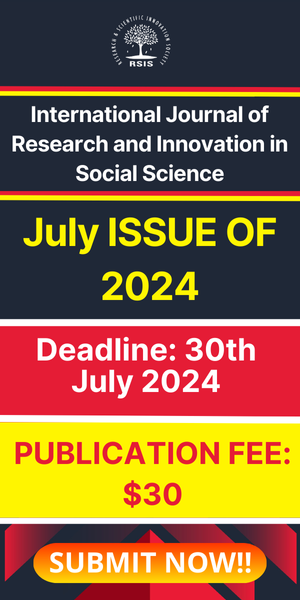Antimicrobial Activity of Clerodendrum Volubile (Marugbo) Leaves against Selected Microbial Pathogens
- June 3, 2021
- Posted by: rsispostadmin
- Categories: Biological Sciences, IJRIAS
International Journal of Research and Innovation in Applied Science (IJRIAS) | Volume VI, Issue IV, April 2021|ISSN 2454-6194
Adeyemo I. A1*, Omobolade O.2
1Department of Biological Sciences, Olusegun Agagu State University of Science and Technology, Okitipupa, Ondo State, Nigeria
2Department of Medical Microbiology and Parasitology, College of Medicine, University of Ibadan, Oyo State, Nigeria.
*Corresponding author
Abstract: Oral and written reports from time immemorial revealed that humans have used various plants and plant parts as efficient medicine to treat various ailments. Qualitative phyto-chemical screening was carried out on extracts of Clerodendrum volubile leaves using ethanol, hot water and cold water as solvents for extraction. The antimicrobial activity of the plant extract was tested against selected human pathogens and was evaluated by agar well diffusion method. Ethanol extracts exhibit higher solubility for more active antimicrobial and phytochemical constituents, consequently displaying the highest antimicrobial activity followed by hot water and least in cold water. The result of this research also established the distribution of various phytochemical constituents in the extracts of Clerodendrum volubile leaves and demonstrates the clinical efficacy of Clerodendrum volubile leaves against the tested pathogens.
Keywords: Clerodendrum volubile leaves, antimicrobial activity, phytochemical constituents, extracts.
I. INTRODUCTION
Plants over the years have been constantly used for medicinal purposes, and have been used as food and raw materials for making cloth (Ryszard, 1998). According to The World Health Organization (2002), more than 80% of the worldwide population relies on the use of traditional medicine to cure several diseases and over 50% of contemporary drugs are derived from medicinal plants. It has also been estimated that only 17% of approximately 250,000 medicinal plants species found in every area of the world have been scientifically studied and examined for their medicinal properties and the biological and chemical diversity of these plants could serve as an important sources of new pharmaceuticals (Mamedov, 2012). Medicinal plant-based antimicrobials for the treatment of UTIs are a vast source of potential medications, such as the Asteraceae family, which comprises nearly 1,600 genera and 23,000 species (Chiavari-Frederico et.al. 2020; Bessada et.al, 2015)


